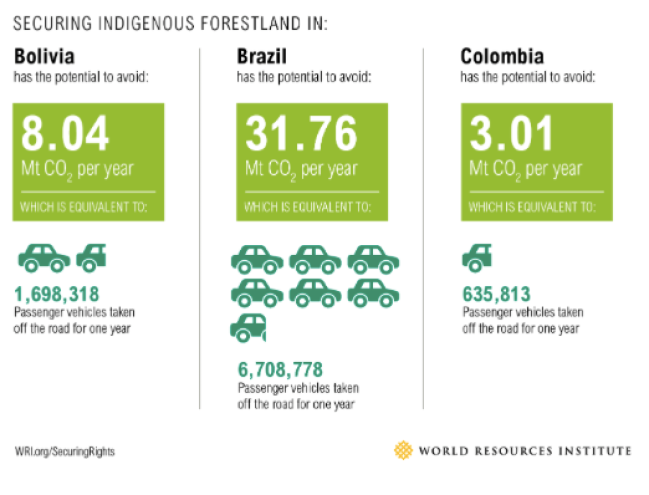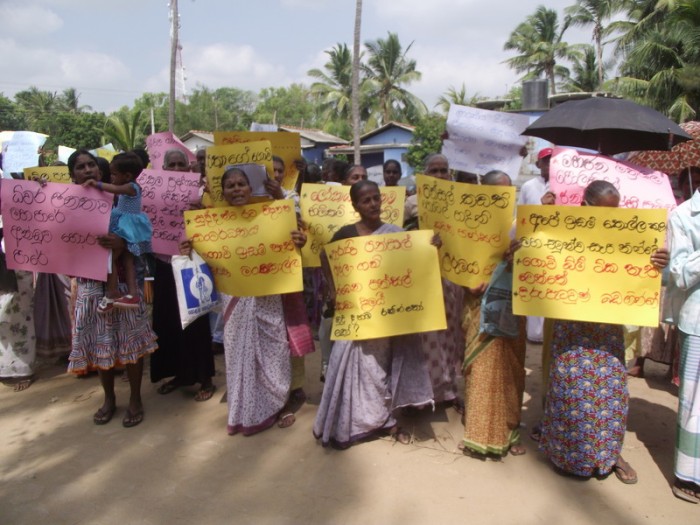
Secure land rights for local and indigenous communities are being recognized as part of the solution to many development challenges. Many argue that secure land rights are key in fighting climate change, poverty, and gender inequality.
This sounds appealing, but how much do you actually know about land rights? This blog post gives you a quick introduction to the many advantages of secure land rights, as well as the challenges we face in implementing them. Test your knowledge on land rights or learn what you can do to demand Land Rights Now.
Land Rights to Fight Poverty and Inequality
The world we envisioned when setting the Sustainable Development Goals in 2015 was a world without poverty and hunger. Secure land rights play an important role in making this better world a reality.
A poverty-free world means no poverty among the 2.5 billion people worldwide living in indigenous and local communities. They represent one-third of the world’s population and a disproportionally large share of the people living in conditions of poverty.
But while local communities directly depend on half of the world’s surface, only 10% of the world’s land is legally titled to them. This leaves them vulnerable to forces from outside their communities like mining, fossil fuels, the agro-industry and hydroelectric powerplants.
Unequal land distribution is not just a problem in developing countries. Scotland is the most unequal country in the “Global North”. Here, 16 individuals hold 10% of the land, and 416 people hold an additional 40%. This means that half of Scotland is owned by less than 0,0001% of its people! As a result, many Scots cannot manage or enjoy the highlands their country is known for.
Land Rights are Women’s Rights
In many societies, women have less access to both privately held land and collectively held land than men. This is a particular form of violence against women, and it’s more common than you think. An analysis of 80 collectively managed forests in 30 countries shows that only 10% had inheritance rights to collective land for women.
This is a great pity. When women and men have access to land, the whole community benefits. Having secure land rights both improves a woman’s nutrition and improves that of her children. At the same time, secure land rights for women can decrease the incidence of domestic abuse and lower the chance that she contracts HIV/AIDS. And secure land rights across genders makes the entire community more resilient to climate change.

Land Rights to Fight Climate Change
Indigenous and local communities are the best guardians of tropical forests, and are key in fighting climate change. Their forests suffer far less deforestation compared to national parks.
Every year, traditionally managed forests in Bolivia, Brazil and Colombia capture at least 42.8 megaton more carbon-dioxide than other protected forests. That is comparable to the annual emissions of about 10 million passenger vehicles (figure 02 shows the lowest bound of the estimate ranges). That’s as many cars as there are in the Netherlands, can you imagine?
Yet some people argue that we simply cannot afford to give secure land rights to local communities. This cannot be further from the truth. Secure land rights are not just effective, they are also cheap! For every dollar spent on secure collective land rights we gain more than a hundred dollars in carbon capturing benefits. This gives us more time to transition to renewables.

Land Rights and Conflict
Land conflicts are escalating into violence worldwide. A University of Queensland study found that 30% of Canadian mining projects were brought to a halt due to protesting and roadblocks. This represents the biggest financial liability in mining.
But it is the individuals and communities defending land and environmental rights that suffer most. They become victims of violence, harassment, defamation, threats and even murder due to their peaceful work.
2017 has been the most dangerous year for environmental defenders; 185 of them have been brutally murdered so far. The most people died in Brazil (43) and Colombia (28). Yet, Honduras is the most dangerous country in the world to defend land rights, with the most murders per capita than anywhere else in the world.

What you can do
So, that’s land rights in a nutshell. A lot of information, right? Make sure you got the most important parts by testing your knowledge on land rights.
Are you convinced that land rights are essential for sustainable development? Join the Land Rights Now movement, which aims to double the global area of land legally recognized as owned or controlled by Indigenous Peoples and local communities by 2020. Get involved in your own community, by catching up with organizations near you who are working on land rights.
Something else you can do is standing in solidarity with indigenous peoples in Paraguay. Although they won a historical legal battle for the return of their ancestral lands, the Government of Paraguay has still not complied a full decade later. Sign the petition to tell the Government of Paraguay this indifference has gone on long enough!
This article was written for the Oxfam Novib Academy Blog, and first appeared there on January 04 2018.